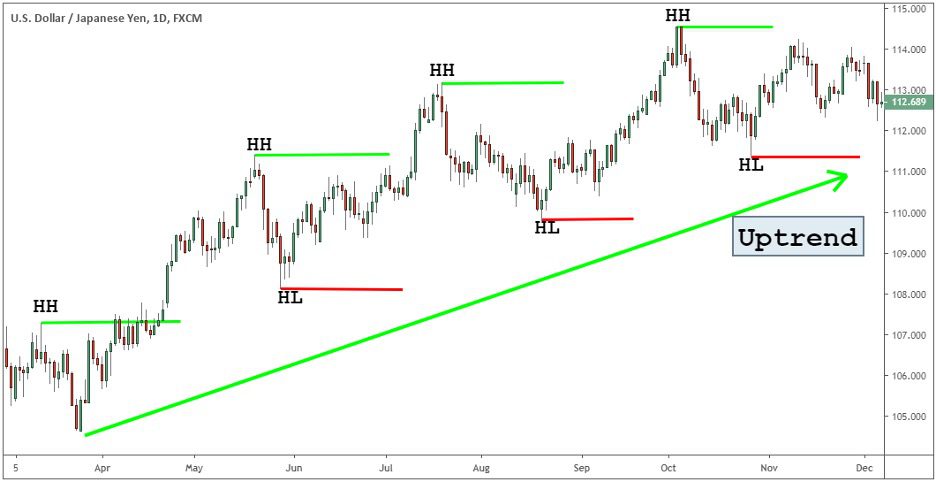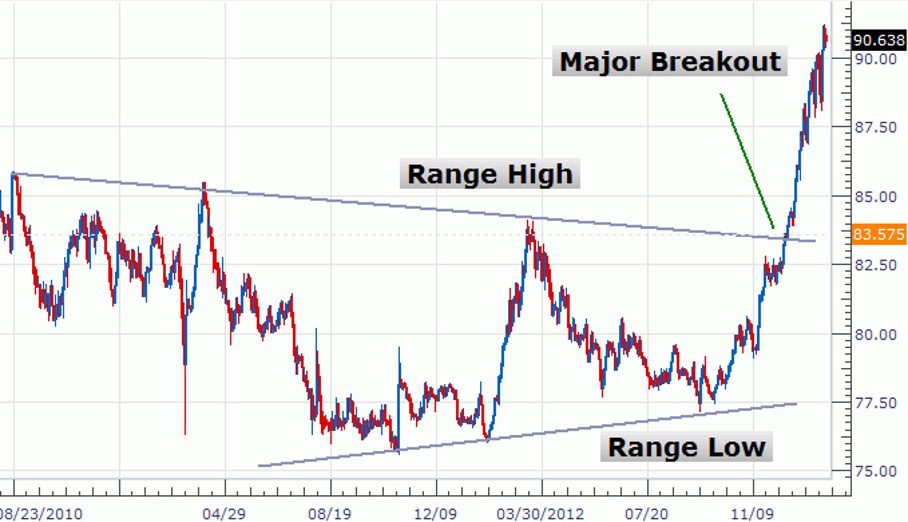If you’re interested in trading in 2022, you’re most likely targeting one of three markets: stocks, Forex, and/or cryptocurrency. Whichever market you choose, each of these marketplaces is driven by its unique volatility, which makes them trading-relevant. However, trading blindly might result in a massive loss at the start, thereby killing your trading enthusiasm. You may have read and seen enticing headlines about trading profits. No trader has ever gained in the long run by betting on a hunch. Successful traders employ multiple different trading tactics. These tactics, as well as the skill to choose when to employ either strategy, are critical to trading profitably.
As you have clicked this article, we assume you already understand the basic concept of the trading market. Here we shall discuss some fundamental trading strategies that would come in handy before entering the market in 2022:
Trend Trading

Trend trading is a strategy in which the trader uses technical analysis to discern the direction of a trend and then acts accordingly. While trend trading is most successful for short-term trading, it may also be used for long-term trading when implemented correctly. In this case, the trader does not have preconceived notions about the market’s trajectory. Instead, the trend trader aims to determine if the market is in an uptrend or decline and follows it. Furthermore, the trend trader has the option of determining the duration of each position. As a result, trend trading is quite flexible for most traders. The disadvantage of the trend trading technique is what occurs during a correction. Due to their long-term holdings, a market correction would significantly impact the trend trader’s technique. They would then need to adopt a new strategy that emphasized trading discipline during corrections. The main advantage of trend trading is that it can be spotted by using very simple trend indicators. The trend can be initially observed by simply looking at a well-organized graph. However, the drawbacks are that trend traders are often stopped out too early when entering the market long and, even worse, too late.
Breakout Trading

Breakout trading is employed by aggressive investors to get in on the ground floor of a new trend. When the price of an asset rises above or below a support level on growing volume, it is defined as a “breakout,” which represents a possible trading opportunity. To evaluate plausible entry and exit positions for breakout trading, a trader should consider current market patterns, as well as support and resistance levels. For example, classic breakout patterns, or signs of price movement that are likely to follow a Fibonacci number sequence, might assist you in determining the magnitude of a breakout. Once the asset price surpasses its past trading range (referred to as a “forecast for a breakout”), the trader must watch for more price rises. Then, one should look for price trend and divergence, or signals that prices are becoming more evenly distributed, in order to confirm a breakout and boost the likelihood of benefitting from it. The benefit of breakout trading is that it eliminates a portion of the inherent risk associated with all deals. A trader is not required to wait for the uptrend to begin. He enters a market that is already on the rise. However, one disadvantage of breakout trading is that the trader may incur a permanent loss if the breakthrough is triggered by irrational public opinion.
Reversal Trading
The reversal trading method is focused on the abrupt reversal of any trend. A reversal may occur in either an upward or downward trend. It is true for each trend that its earlier success reverses after a significant shift. A ‘bullish reversal’ indicator indicates that the market has bottomed out and is ready to reverse direction. In contrast, a ‘bearish reversal’ indicates that the market has surpassed its top and is ready to drop. To detect a reversal scenario, look for a trendline with a lower degree that projects upward from the previous, higher degree trendline. The junction of the two trendlines is referred to as a reversal region. It allows for the definition of new resistance or support levels by linking the price action at past support or resistance. Bear in mind, however, that reversals in market behavior are less common than retracements and that there must be evidence of price rejection in the reversal zone before it can be deemed a genuine indication. The benefit of reversal trading is that you do not need to examine overbought/oversold situations since the price action has already reversed. You are utilizing a trendline crossing the reversal zone. Moreover, reversal signals may be traded using trendlines or pivot levels; more on this in a future article. However, every trading method has disadvantages, and reverse trading is no exception. Since retracements and reversals are driven by a change in market behavior, they may be deceptively challenging to identify at times.
Conclusion
The trading strategy is a diverse and sophisticated topic to learn. We only discussed some fundamental trading strategies in this article. Learning to utilize these strategies is even more difficult than identifying them. But if you’re dedicated enough, you will gradually become more competent through knowledge and experience, thus gaining a handsome profit by applying these strategies.
